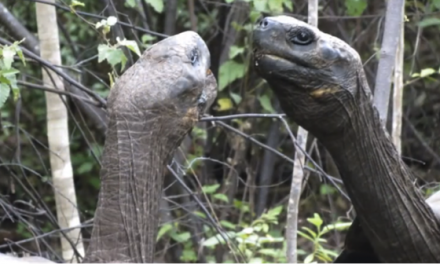
Next week, I’ll celebrate another birthday. That occasion has me wondering: at what age are we our happiest?
Next week, I’ll mark another birthday. While I’m grateful for all the ones I’ve been fortunate enough to have so far, how quickly they seem to roll by now is somewhat daunting. That makes me a bit sad.
In turn, that has me wondering: at what age are we our happiest? Is it when we feel the healthiest, when we’re the most satisfied with the place where we live, or when we’ve accumulated the most wealth? This seemingly simple question has been studied extensively over the past decades, but a definitive answer has long been elusive. Finally, some light is being shed on the topic.
And, as we learned during the recent pandemic, access to blue spaces and green spaces also plays a big part in happiness. A new scientific study reveals that having just 10% more forest space in your residential zip code is associated with reduced serious psychological distress. So, as a birthday exercise, let’s all take a closer look at the intersection where happiness, access to nature, wealth and age meet.

One recent study showed that life satisfaction increased slightly from age 16 until the age of 70.
Over a long period of life, we tend to keep positive
To determine at what age people feel the most happy, a research team from the German Sport University Cologne, Ruhr University Bochum, Johannes Gutenberg University Mainz and the universities of Basel and Bern in Switzerland examined trends in subjective well-being over a life span based on 443 samples from longitudinal studies with a total of 460,902 participants. Their findings were published in a recent edition of the American Psychological Association’s Psychological Bulletin.
The scientists focused on changes in three, central components of subjective well-being: life satisfaction, positive emotional states and negative emotional states. What they found is that life satisfaction decreased between the ages of nine and 16, then increased slightly until the age of 70, and then decreased once again until the age of 96. Positive emotional states showed a general decline from age nine to age 94, while negative emotional states fluctuated slightly between ages nine and 22, then declined until age 60 and then increased once again. The authors identified greater median changes in positive and negative emotional states than in life satisfaction.
Summing up the results, the researchers say that the study indicates a positive trend over a wide period of life, if we look at life satisfaction and negative emotional states. The slight decline in life satisfaction between the ages of nine and 16 is attributed to, for example, changes to the body and to social life that take place during puberty. Satisfaction rises again, though, from young adulthood onward. Positive feelings tend to decrease from childhood to late adulthood.

In very late adulthood, having social contacts could help subjective well-being from worsening.
In very late adulthood, all components of subjective well-being tended to worsen rather than improve, perhaps related to the fact that in very old people, health often deteriorates, physical performance decreases and social contacts diminish, often because peers pass away.
The authors of the study conclude that their work highlights the need to consider and promote subjective well-being with its various components across the total life span. Their findings could provide significant guidance for the development of intervention programs, especially those aimed at maintaining or improving subjective well-being late in life.
Throughout a range of zip codes, we relate to forests
But nature, as usual, comes to our rescue. Even small differences in the availability of urban green spaces and blue spaces may be associated with better mental and physical health in older adults, according to a recent Washington State University study that was published in the journal Health and Place.

According to a new study, even small differences in the availability of urban green and blue spaces may be associated with better mental and physical health in older adults.
Using health survey data from more than 42,000 people aged 65 and older who lived in urban areas of Washington state between 2011 and 2019, the researchers related survey respondents’ general and mental health outcomes to different measures that quantified access to blue and green spaces—such as forests, lakes, parks and rivers—within their residential zip codes.
The study’s findings showed that having just 10% more forest space in a person’s residential zip code was associated with reduced mental health problems that require treatment and interfere with people’s social lives, school success or work performance. Similarly, a 10% increase in green space, trail length, tree cover or water bodies lowered the chance that older people reported their general health as fair or poor. Thus, the loss of our urban blue and green spaces due to rapid urbanization may not just have an environmental impact but could have a public health impact, as well.
Older people are especially vulnerable to mental health issues, such as depression, which has been shown to increase the risk of cognitive decline and dementia. They are also less likely to receive treatment to manage their mental health conditions. That could be because older adults with anxiety, depression or mental health issues are known to be more resistant to medical interventions or talk therapy, which are the go-to treatments for these conditions. So, if exposure to blue or green spaces could help prevent, delay or even treat poor mental health in older adults, it’s worth trying. One potential solution could involve nature prescriptions, a growing trend that involves health-care providers giving patients written recommendations to spend time outdoors.

To improve well-being, some health-care providers hand out “nature prescriptions,” which are written recommendations to spend time outdoors.
Though other studies have looked at how proximity to nature might impact health, the Washington State University study is one of the first to look at this relationship in older adults in the United States. The possible link between nature exposure and cognitive decline (such as Alzheimer’s disease or dementia) is a new, exciting area of study. Ultimately, it’s hoped that this research will help resolve health inequities among older adults from lower socioeconomic backgrounds, which may be tied to unequal access to blue and green spaces in the urban areas where they live.
During a worldwide pandemic, we turned to the outdoors
It may come as no surprise that people exposed to more green space during the first year of the COVID-19 pandemic reported significantly less anxiety and depression, according to new University of Colorado Boulder research published in a recent issue of the journal PLOS One.
The study also found that, at a time when mental health problems soared due to financial woes, nonstop news coverage of the virus and supply shortages, people sought solace in the great outdoors, with one-third spending more time there than they did pre-COVID. This demonstrates how critical it is to keep green spaces and parks open in times of crisis. It also shows that, as a public health measure, more effort should be made to develop green spaces and make them accessible.

Often, to objectively quantify greenery in a neighborhood, researchers will collect aerial and satellite images.
For the study, conducted between November 2019 and January 2021, the authors presented approximately 1,200 Denver-area residents with a 30-minute survey gauging their mental health and their perceptions of green spaces near their homes, including how much there was, whether they could see them, whether they were accessible, how much they used them and their quality. The authors also collected satellite imagery to objectively quantify greenery in respondents’ neighborhoods.
Once COVID-19 emerged and lockdowns ensued, additional questions were added to the survey, providing a rare opportunity to also look at how the pandemic influenced mental health over time and what was most stressful about it. The researchers found, not surprisingly, that the pandemic impacted mental health negatively. But it was also discovered that green spaces could have a powerful, protective effect, even at a time of such extraordinary stressors.
Unexpectedly, however, the study found no association between being diagnosed with COVID and having poor mental health. But respondents reported that having symptoms, no diagnosis and no way to test was distressing. Those who lost income or felt they were working in unsafe environments were also more likely to be depressed or stressed, while the strongest source of mental health problems was a fear of supply shortages (including food and toilet paper). People who spent a lot of time scrolling the Internet looking at the news reported poorer mental health, as well.

To get the most benefit out of a nearby green space, you must go out and use it. A recent study showed that those who used green spaces the most had significantly lower levels of anxiety and depression.
In contrast, merely having abundant green spaces nearby, as measured by satellite images, was associated with lower depression scores. To get the most benefit out of nearby green spaces, however, people had to get out and use them. Those who did had significantly lower anxiety and depression.
What’s most interesting to me is that this study showed that there are many dimensions to green spaces, and these qualities can impact mental health differently. Unfortunately, policymakers often rely solely on objective measures, such as proximity to parks or satellite images, when assessing whether to invest in more greenery in a community. But on a satellite image, for example, a large patch of greenery could be a weed-filled lot. A “nearby park” could be on the other side of a busy highway.
Many public agencies closed public green spaces, including neighborhood playgrounds and national parks, at the onset of the pandemic for fear that the virus could be easily spread via surfaces. Once parks reopened—with places like bars, churches and gyms still closed—Coloradans flocked to the outdoors: 33% of respondents reported spending more time in parks or on trails than the year before.

According to the “biophilia hypothesis,” humans innately seek connections with green spaces because we evolved with nature. Calming environments influence stress hormones in a way that promotes healing and fends off disease.
This study adds to a growing body of evidence suggesting that green spaces can have a measurable impact on health. According to one theory, known as the “biophilia hypothesis,” humans innately tend to seek connections with green spaces, where the calming environment influences stress hormones in a way that promotes healing and fends off disease. The idea is that we evolved with nature, and only in the recent past have we been living in concrete jungles.
One famous 1984 study even found that when hospital patients had rooms with windows looking out on green spaces, their wounds healed faster, and they required less pain medication than those looking out on brick walls.
The researchers caution, however, that correlations between green spaces and health must be scrutinized, in part because people with higher incomes and, thus, better access to healthy food and health care may also be more able to afford to live near green spaces. To address that, this study took sociodemographic factors into account, along with the many unique circumstances that emerged during COVID. After controlling for all the factors, the benefits remained clear: spend more time outside. Pandemic or no pandemic, it’s good for your mental health.
And, I’d add, do so no matter your age.

When hospital patients have rooms with views of green spaces, their wounds heal faster and they require less pain medication than those whose windows look out on brick walls.
Across international cultures, we don’t need lots of money to be happy
But what about wealth? Can money outweigh the age factor in measurements of happiness?
Economic growth is often prescribed as a sure way of increasing the well-being of people in low-income nations, and global surveys in recent decades have supported this strategy by showing that people in high-income countries tend to report higher levels of life satisfaction than those in low-income countries. This strong correlation might suggest that only those in rich societies are happy.
However, a recent study by researchers from the Institute of Environmental Science and Technology at Spain’s Universitat Autonoma de Barcelona—in collaboration with scientists from Canada’s McGill University—shows that many societies with very low monetary incomes have remarkably high levels of life satisfaction, comparable to those in wealthy countries.

Many people in Indigenous communities around the world are leading very satisfying lives despite having very little money.
While most global polls, such as the World Happiness Report, gather thousands of responses from the citizens of industrialized societies, they tend to overlook people in small-scale societies on the fringes, where the exchange of money plays a minimal role in everyday life and livelihoods depend directly on nature. This new research, published in the scientific journal Proceedings of the National Academy of Sciences, consisted of a survey of 2,966 people from Indigenous and local communities in 19 globally distributed sites. Only 64% of these surveyed households had any cash income.
The results show that, astonishingly, many populations with very low incomes report very high average levels of life satisfaction, with scores like those in wealthy countries. The average life satisfaction score across the studied small-scale societies was 6.8 on a scale of zero to 10. Although not all societies reported being highly satisfied—averages were as low as 5.1—four of the sites reported average scores higher than eight, typical of wealthy Scandinavian countries in other polls; and this is so, despite many of these societies having suffered histories of marginalization and oppression. The results demonstrate that human societies can support very satisfactory lives for their members without necessarily requiring high degrees of material wealth, as measured in monetary terms.
The researchers highlight that, although they now know that people in many Indigenous and local communities report high levels of life satisfaction, they do not know why. Prior work would suggest that connections to nature, family, social support and relationships, and spirituality are among the important factors on which this happiness is based, but it is possible that the important factors differ significantly between societies; or, conversely, that a small subset of factors dominate everywhere. Learning more about what makes life satisfying in these diverse communities might help many others to lead more satisfying lives while at the same time addressing the sustainability crisis.

I’m lucky: I’ve almost always been able to live in areas that are close to natural places—even if it was only a small pond by a county highway or, as now, in the shadow of Oregon’s majestic Mount Hood.
Beyond all our birthdays, we seek the blue and green spaces
At the risk of sounding too Pollyannaish, I would say that I try to find the joy in every year and age I attain. And, I’m happy to report, I’ve almost always been able to live in areas that are close to natural places, even if it was only a small pond by a county highway, or, as now, in the shadow of Oregon’s majestic Mount Hood.
But happiness—like life—is complicated, and it’s not just about being able to see trees from your home. As we’ve learned, the accessibility, amount and quality of that blue or green space matters, too.
But just having new proof that happiness doesn’t so much rely on a certain age attained or a specified amount of money in a bank account but rather on access to and time spent in nature is a pretty good birthday gift this year.
And that, at a “later-in-life age,” makes me happy.
Here’s to finding your true places and natural habitats,
Candy


































